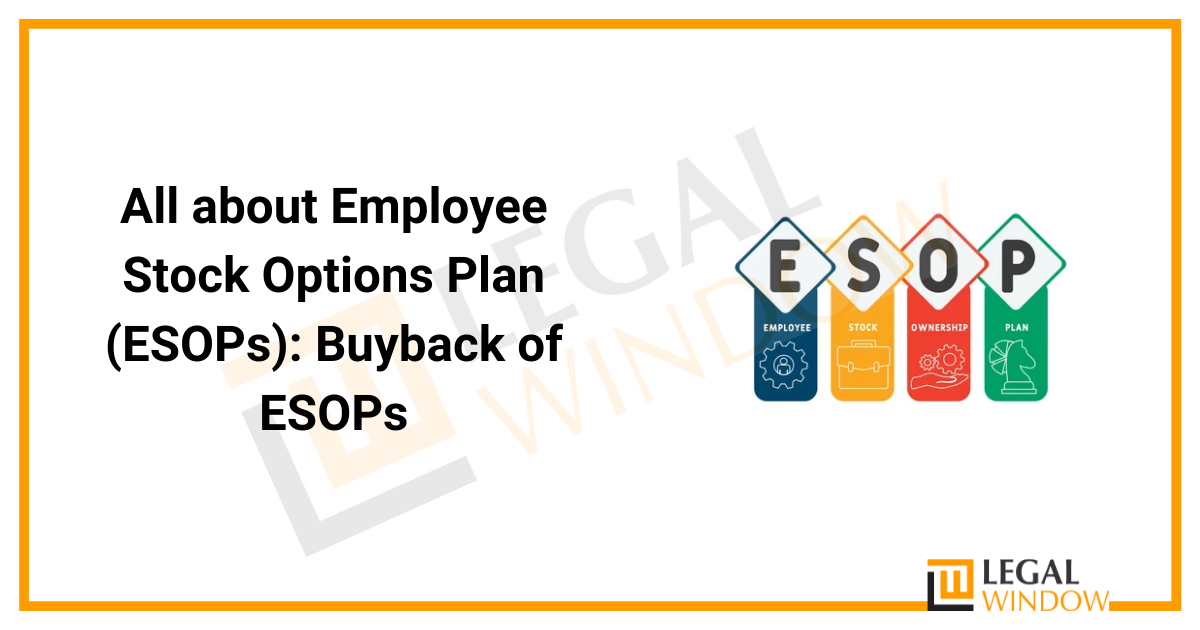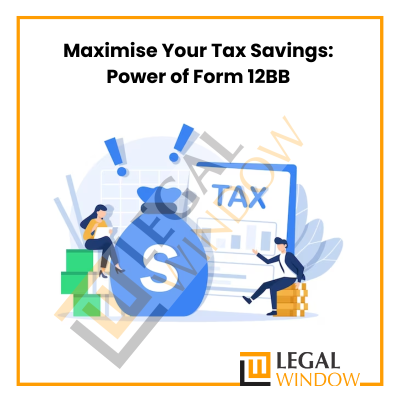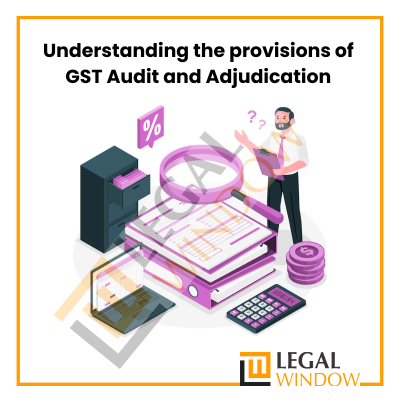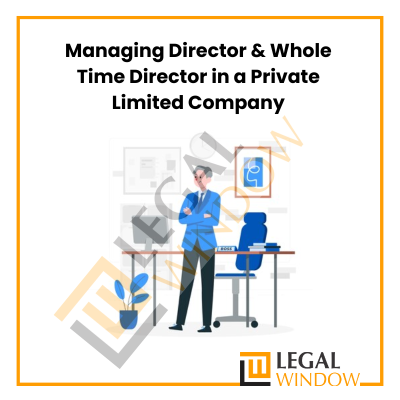All about Employee Stock Options Plan (ESOPs): Buyback of ESOPs
- April 27, 2022
- Company Law

Employee Stock Options Plan (ESOP) is an employee benefit plan, that provides workers ownership interest in the company. This interest takes in the form of shares of stock. Further, this plan is offered to employees of the Company to allow the Employees to participate in the growth of the Company. This blog talks all about the ‘Employee Stock Options Plan (ESOPs): Buyback of ESOPs’.
| Table of Content |
Benefits of Employee Stock Options Plan (ESOPs)
Following are certain benefits of the (Employee Stock Options Plan) ESOPs:
- To motivate employees and improve their morale
- To reward employees for their commitment and performance
- Wealth creations for Employees.
ESOP Stand for
ESOP stands for employee stock ownership plan. An ESOP gives employees company share, regularly based on the duration of their employment. Naturally, ESOPs are a part of a compensation package, where the share will vest over some time.
ESOPs, give the subsidizing company the marketing shareholder and the participants numerous tax benefits, making them qualified plans. Employers often use ESOPs as a companies-finance policy to line up the interests of their employees with those of their shareholders.
However, ESOPs are planned so that employees’ motivations and interests are united with those of the company’s shareholders.
Work of Employee Stock Ownership Plan
An employee stock ownership plan is established as a trust fund. The companies might place newly allotted shares, borrow money to purchase company shares or fund the trust with cash to purchase company shares.
In the meantime, employees can collect an increasing number of shares, an amount that can rise over time depending on their employment terms. These shares are only to be sold only at or after the time of termination or retirement, and the employee has salaried the cash value of their shares.
Why Company offers ESOPs to their employees?
Companies often use Employee stock ownership plans as a tool for inviting and remembering excellent employees. They generally allocate the shares in a phased manner. For example, a company might give its employees the shares at the close of the financial year. Thus donating its employees is an enticement for continuing with the organization for getting that grant.
Companies offering ESOPs have long-term objectives:
- Not only do companies wish to retain employees for the long term but also intend to make them the shareholders of their company.
- Most IT companies have alarming attrition rates, and ESOPs could help them bring down such heavy attrition Start-ups offer stocks for attracting talent.
- Regularly such companies are cash-strapped and are unable to offer handsome salaries. But by offering a stake in their organization, they make their compensation package competitive.
ESOPs from an Employee’s Perspective
By ESOPs, an employee gets the benefit of gaining the shares of the company at a minimal rate, selling them and making a profit. There are numerous success stories of an employee raking in the riches together with the organizers of the companies.
A very noteworthy example is Google when it went public. The founders Sergey Brin and Larry Page became the richest persons in the world, even the stock-holder employees earned millions too.
An Example of an Employee Stock Ownership Plan
Assume an employee who has worked at a large tech firm for 10 years. Under the company’s employee stock ownership plan, they have the right to receive 20 shares after the first year, and 200 shares total after 10 years. So, when the employee retires, they will get the share value in cash. This plan may comprise stock options, regulated shares, and stock appreciation rights, among others.
Buyback of ESOPs
The buyback of ESOPs is an act similar to buying back shares by a company. In this case, capital advances on presenting shares to the company are exempted from the tax in the hands of investors. Consequently, ESOP owners need not pay any tax on advances made while presenting shares in the buyback.
It is a company activity in which a company buys back its shares from the present shareholders by using its Free Reserves or; issuance of another Security. A buyback permits companies to invest in themselves.
According to Section 68(1) of the Companies Act,2013 Buyback can be supported out of:
- its free reserves;
- the securities premium account; or
- the proceeds of the issue of any shares or other specified securities.
The Securities allowed being bought back by the Company
Under section 68 (1) of the Companies Act, 2013, a company may buy its shares or other specified securities. According to explanation 1 of Section 68, “specified securities” contains employees’ stock options or other securities as may be reported by the Central Government from time to time.
Thus, Employee Stock Options (ESOPs) which are not so far changed into the Shares of the Company shall also be considered as a Security under section 68 of the Companies Act, 2013. In addition, Section 68(5) says that:
- From the existing shareholders or security holders on a proportionate basis;
- From the open market;
- By purchasing the securities ISSUED to employees of the company under a scheme of stock option or sweat equity.
It is clear from Section 68 (5) that the Company can buy back its Securities as well as issue ESOPs.
Process for Buyback of ESOPs
Following is the process of Buyback of assigned ESOPs:
- Selecting candidates for buyback;
- Calling Board Meeting and obtain approval of the Board for Buy-Back of ESOPs using the Funds as specified in Section 68(1) of the Companies Act, 2013;
- Sending intimation letter to qualified Employees informing Companies of the Purpose to Buy Back of ESOPs;
- On Receipt of confirmation and consent from the Eligible Employees, initiate the process for cancellation of relevant ESOPs and make payment to them;
- However, making payment for ESOP, remember that the amount will be treated as Privileges in the hands of the Employee and hence Employer (the Company) needs to deduct necessary taxes;
- Once the buyback is completed, Company needs to update its Register (SH-10) of Buyback with the following details:
- The consideration paid for the shares or securities bought back,
- The date of cancellation of shares or securities,
- The date of extinguishing and physically destroying the shares or securities and such other particulars as prescribed under the Rules.
Recently the companies like HealthifyMe, Network, Swiggy, and many more have also completed the buyback of ESOPs. Further, Indian startups record the highest ever ESOP buyback in 2021: $440 Million. Flipkart bought back ESOPs worth $80.5 million, UpGrad, Udaan, CRED, Share Chat and PhonePe announced employees stock buyback programs worth $29.5 million, $23 million, $19.3 million, $19.1 million and $18 million, separately and Foodtech major Swiggy also announced that they will buy stock worth $35-40 million held by its employees in 2021 and 2022.
Conclusion
Thus, it is clear that this plan is offered to employees of the Company to allow the Employees to participate in the growth of the Company. The buyback of ESOPs is an act similar to buying back shares by a company. So, need more details to connect with our experts.
CS Urvashi Jain is an associate member of the Institute of Company Secretaries of India. Her expertise, inter-alia, is in regulatory approvals, licenses, registrations for any organization set up in India. She posse’s good exposure to compliance management system, legal due diligence, drafting and vetting of various legal agreements. She has good command in drafting manuals, blogs, guides, interpretations and providing opinions on the different core areas of companies act, intellectual properties and taxation.
Categories
- Agreement Drafting (23)
- Annual Compliance (11)
- Change in Business (36)
- Company Law (148)
- Compliance (89)
- Digital Banking (3)
- Drug License (3)
- FEMA (17)
- Finance Company (42)
- Foreign Taxation (6)
- FSSAI License/Registration (14)
- GST (118)
- Hallmark Registration (1)
- Income Tax (199)
- Latest News (34)
- Miscellaneous (164)
- NBFC Registration (8)
- NGO (14)
- SEBI Registration (6)
- Section 8 Company (7)
- Start and manage a business (20)
- Startup/ Registration (127)
- Trademark Registration/IPR (40)
Recent Posts
- Farmer Producer Companies-Major provisions under Companies Act April 26, 2024
- Detailed Analysis of Section 179 of the Companies Act, 2013 April 24, 2024
- Maximise Your Tax Savings: Power of Form 12BB April 23, 2024
About us
LegalWindow.in is a professional technology driven platform of multidisciplined experts like CA/CS/Lawyers spanning with an aim to provide concrete solution to individuals, start-ups and other business organisation by maximising their growth at an affordable cost.








